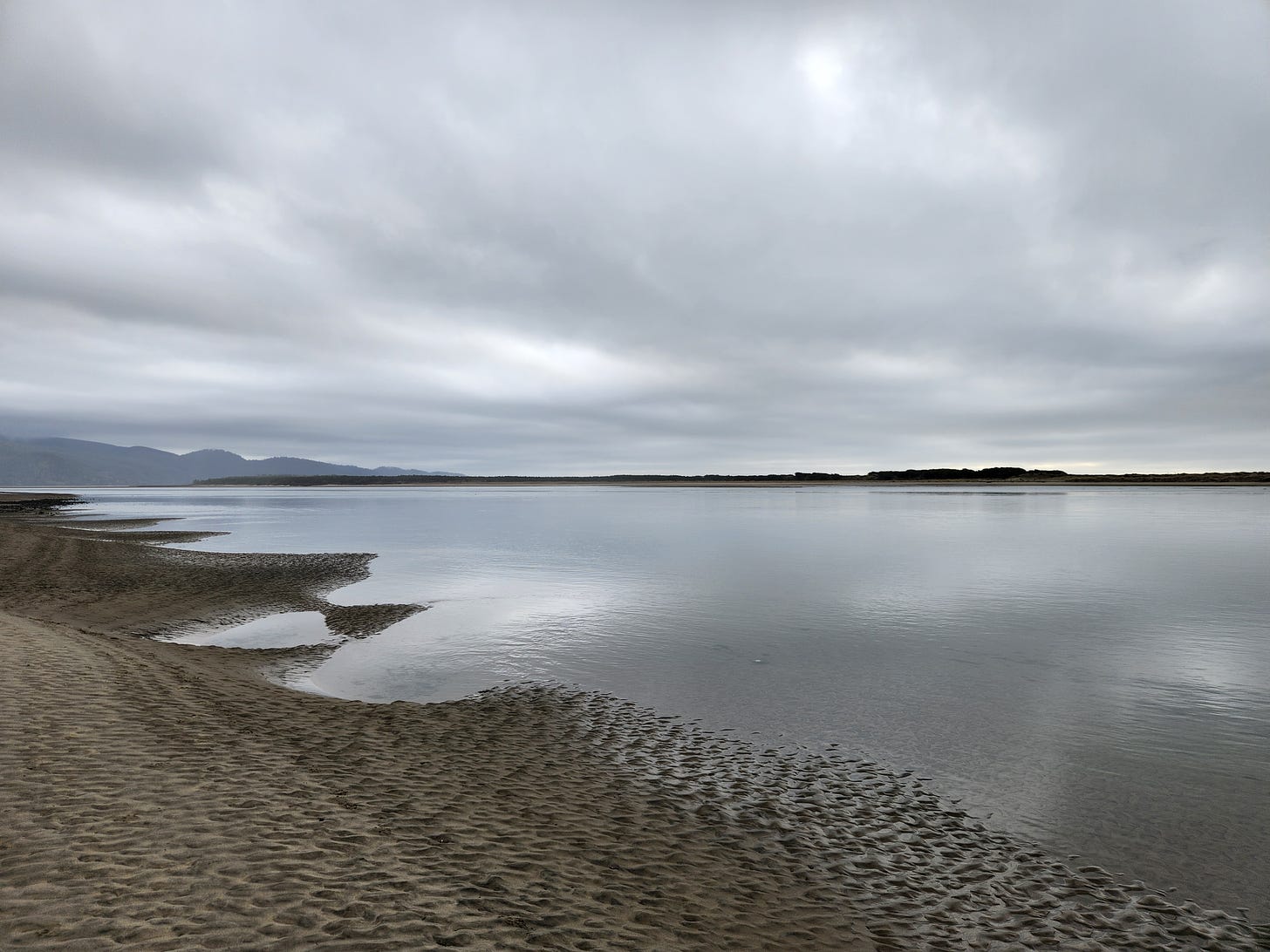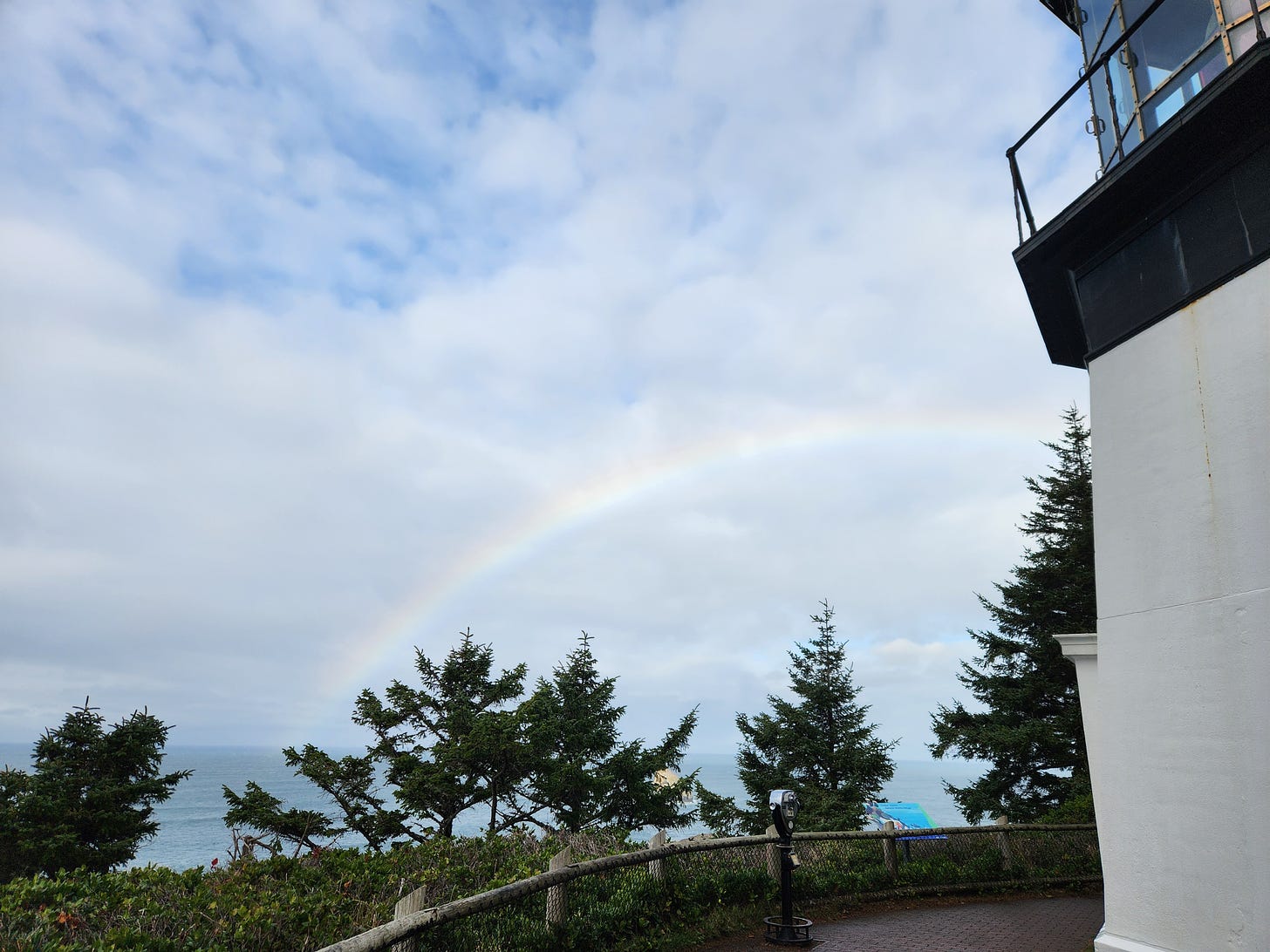With the holidays, writing time shrunk this week as I spent hours driving to and from family gatherings and left my computer behind. But amid the holiday hustle, I did get a moment to be outside, allowing a short entry for The Field Trip from the Oregon Coast. Read on!
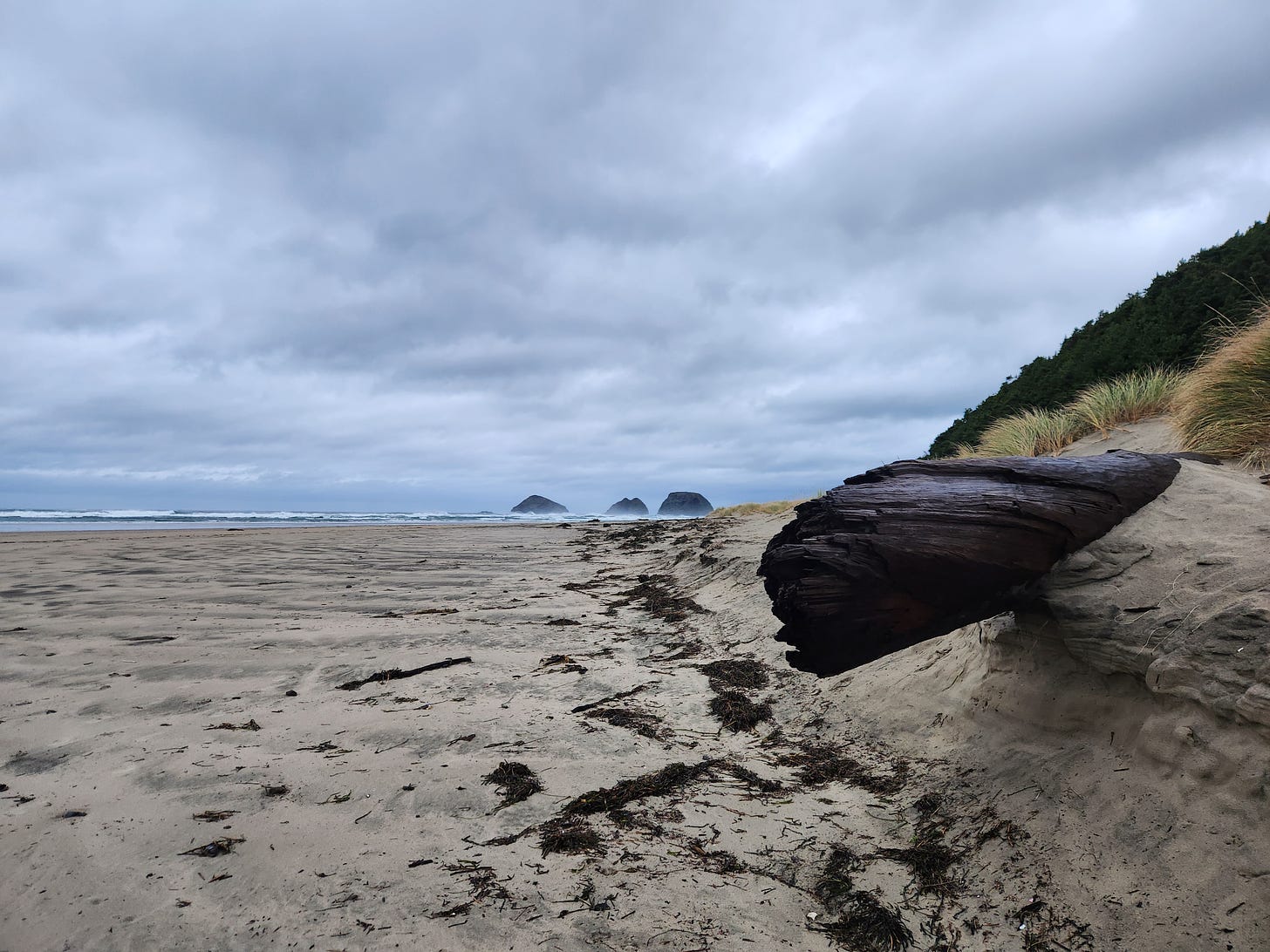
Traveling through Traditional Economies
Luckily, some of my family lives on the Oregon Coast, which means occasionally I visit there. I always enjoy the trips, both because of family connections and the beauty of the shore.
Our drive down passed through countryside that is a good reminder that the Northwest’s natural resource economy remains critical. Although I know that many mills have closed in the last forty years and shipping agricultural products often remains hidden, we saw evidence that the Northwest economy is not all Microsoft and Amazon. Such signs remind me of the region’s history.
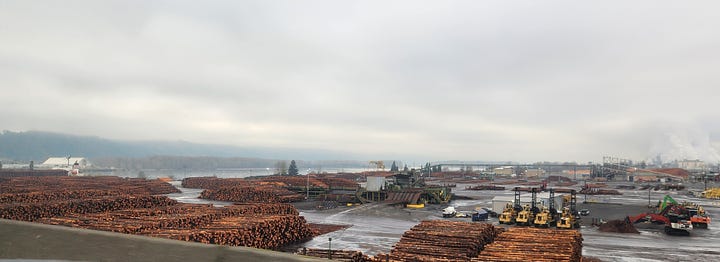
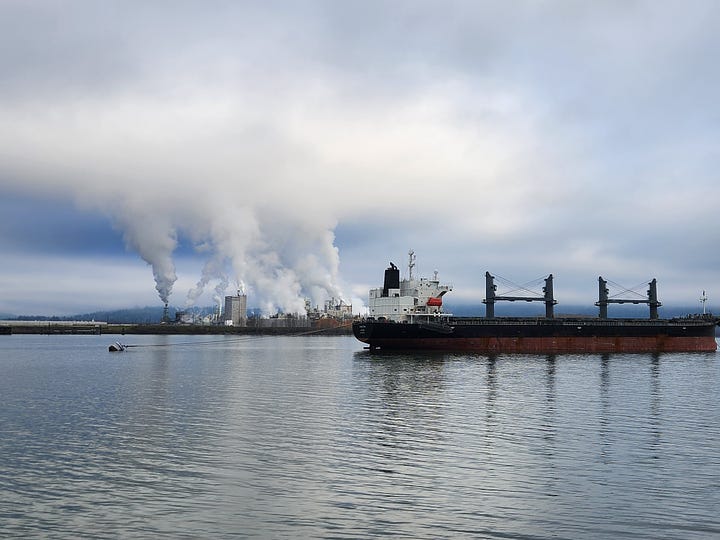
Oregon’s Coastal Decisions
The Oregon Coast feels welcoming, even when the tides are high and the winds gust—as we experienced. One reason the coast feels welcoming is because of political decisions made a couple generations ago.
In summer 1966, a motel owner in Cannon Beach put up a fence on the beach telling the public the sand in that stretch was only for guests. Tradition and some law supported the idea of public access, but traditions and laws matter only if they are widely recognized and enforced (as we have all learned in recent years). Many Oregonians found the motel owner’s gambit appalling, and soon the state legislature went to work.
When policymakers opened hearings to ensure public access remained in Oregon, they found many coastal residents and property rights advocates opposed them. They did not want the public to enjoy the right to turn a beach in front of a home or hotel into an open playground. At risk was the traditional right to access beaches versus traditional property rights.
The debate unfolded about the same time as Oregon’s land use law (written about in the newsletter here), and Governor Tom McCall again expressed support for Oregon’s livability. “We cannot afford to ignore our responsibilities to the public of this state for protecting the dry sands from the encroachment of crass commercialism,” said McCall during the debate.1 Saving Oregon’s beaches became a popular cause. Soon, public access advocates prevailed and Gov. McCall signed the so-called Beach Bill.
Walking along the beach today without having to confront No Trespassing signs is a legacy of this.
To the Lighthouse
The beach is not the only way to experience the Oregon Coast, though. When visiting family, we often go to the Cape Meares Lighthouse. It is a convenient location to view the coastline from a higher ridge.
Interpretive signs there tell of an old tradition of shooting birds that roosted on the offshore rocks or the coastal cliffs. Photographers and conservationists (sometimes combined in the same person such as William Finley) helped end this practice when they rallied President Theodore Roosevelt to create a wildlife refuge here in 1907, something that has grown in the century after into the Oregon Islands National Wildlife Refuge.
We enjoy the views and shadows and sounds, but the lighthouse at the end of a short path is the highlight. I’ve always enjoyed lighthouses, from the one on Whidbey Island I visited frequently as a boy to the one in Pete’s Dragon in the first movie I saw.
Lighthouses invite imagination: storms they illuminated, beacons they became, keepers who worked in isolation but in a place for tremendous observation. In a fantasy we sometimes indulge, my spouse and I consider taking a turn staffing a lighthouse through a season, or longer.
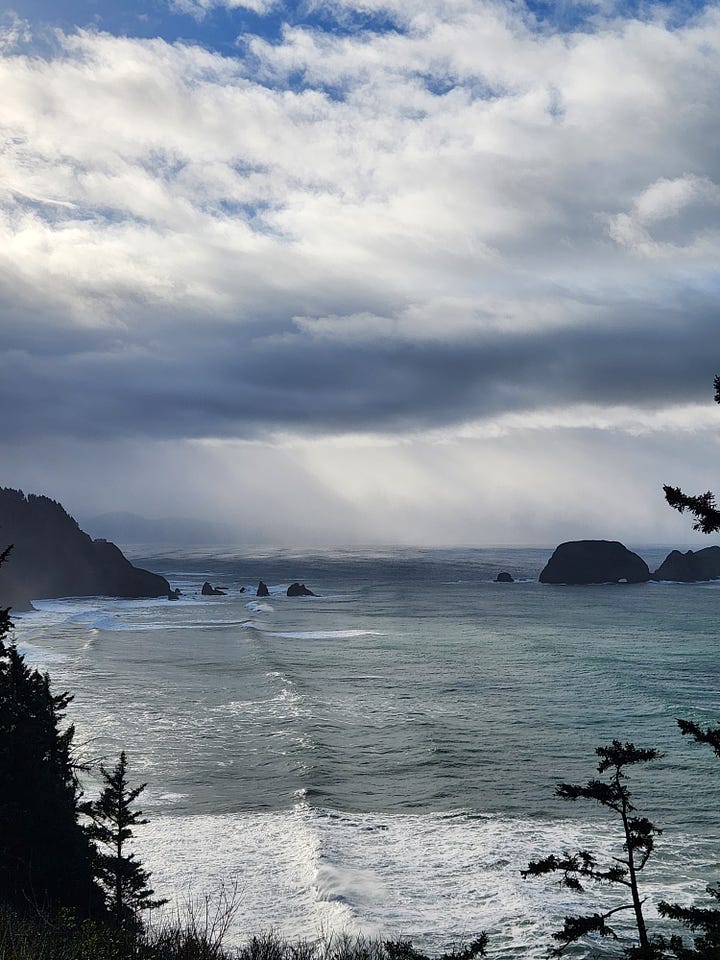
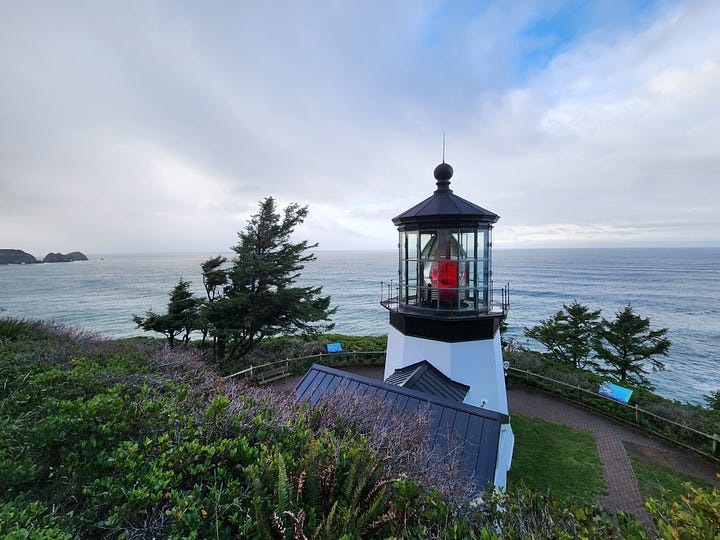
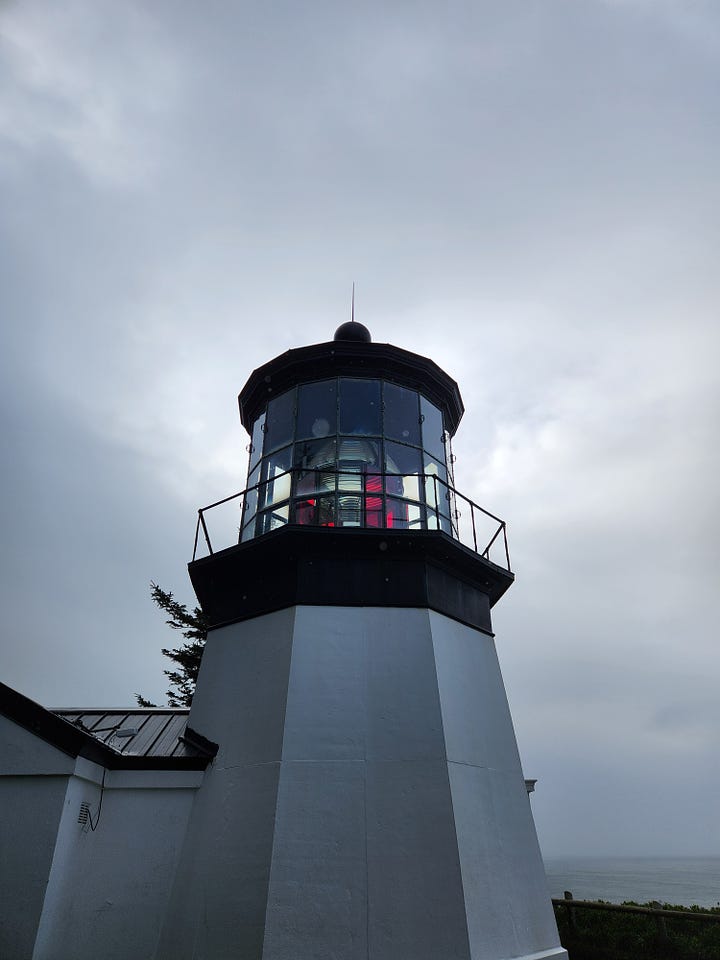
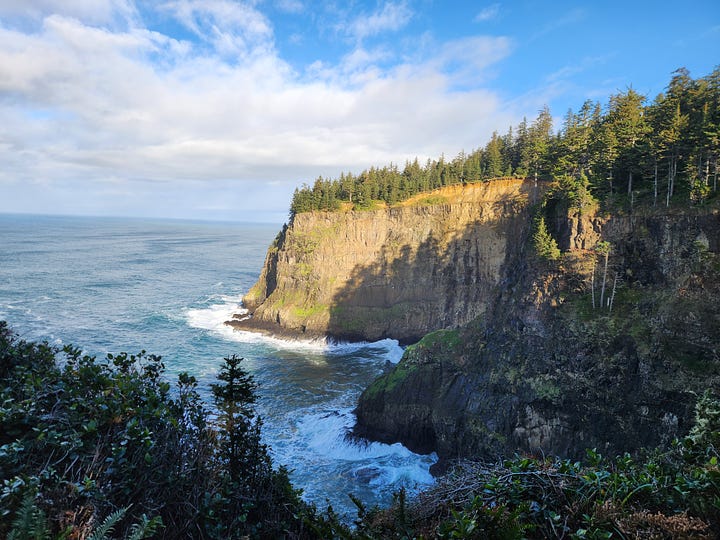
At Cape Meares on Christmas Eve, four generations of my family gathered and went to the lighthouse. We bundled up the toddlers and rested at the picnic benches for the patriarch, now in his ninth decade, to gather energy and rest.
At the lighthouse, the weather turned and turned again. A rainbow appeared.
Sometimes reality offers a perfect script.
Closing Words
Old Writing
I have not written about the Oregon Coast in a serious way, but an early piece of scholarship examined some efforts to protect a stretch of Washington coastline. Later, I wrote an op-ed based on the protest.
New Writing
Nothing new was published this week, but my recent story about wintering birds in Skagit was reprinted on Christmas. If you missed its original publication, you can now find it here.
As always, you can find my books, and books where some of my work is included, at my Bookshop affiliate page (where, if you order, I get a small benefit).
Special Offer
Last chance! A reminder that I’m offering a 20% discount between Thanksgiving and New Years for subscriptions to Taking Bearings. I hope you’ll consider supporting my work and enjoying access to extra features, including a monthly interview with another writer or artist.
Taking Bearings Next Week
My monthly visit to The Library is next week. I think I’ll be connecting to last month’s entry on Wendell Berry, but I may try something different. Stay tuned!
This quotation is found in Derek R. Larson, Keeping Oregon Green: Livability, Stewardship, and the Challenges of Growth, 1960-1980 (Corvallis: Oregon State University Press, 2016), 128, emphasis added. This is my main source for the Beach Bill discussion.



